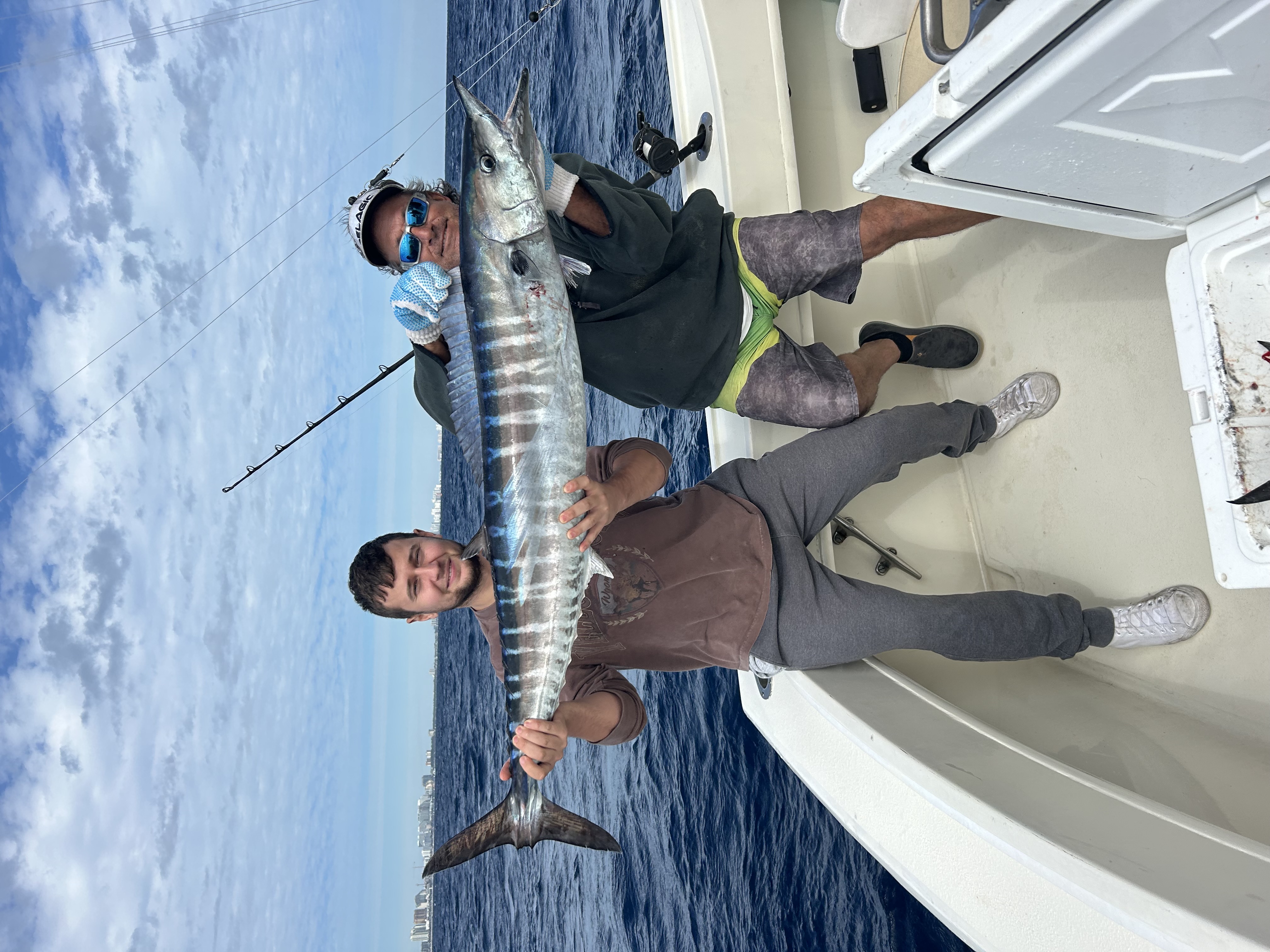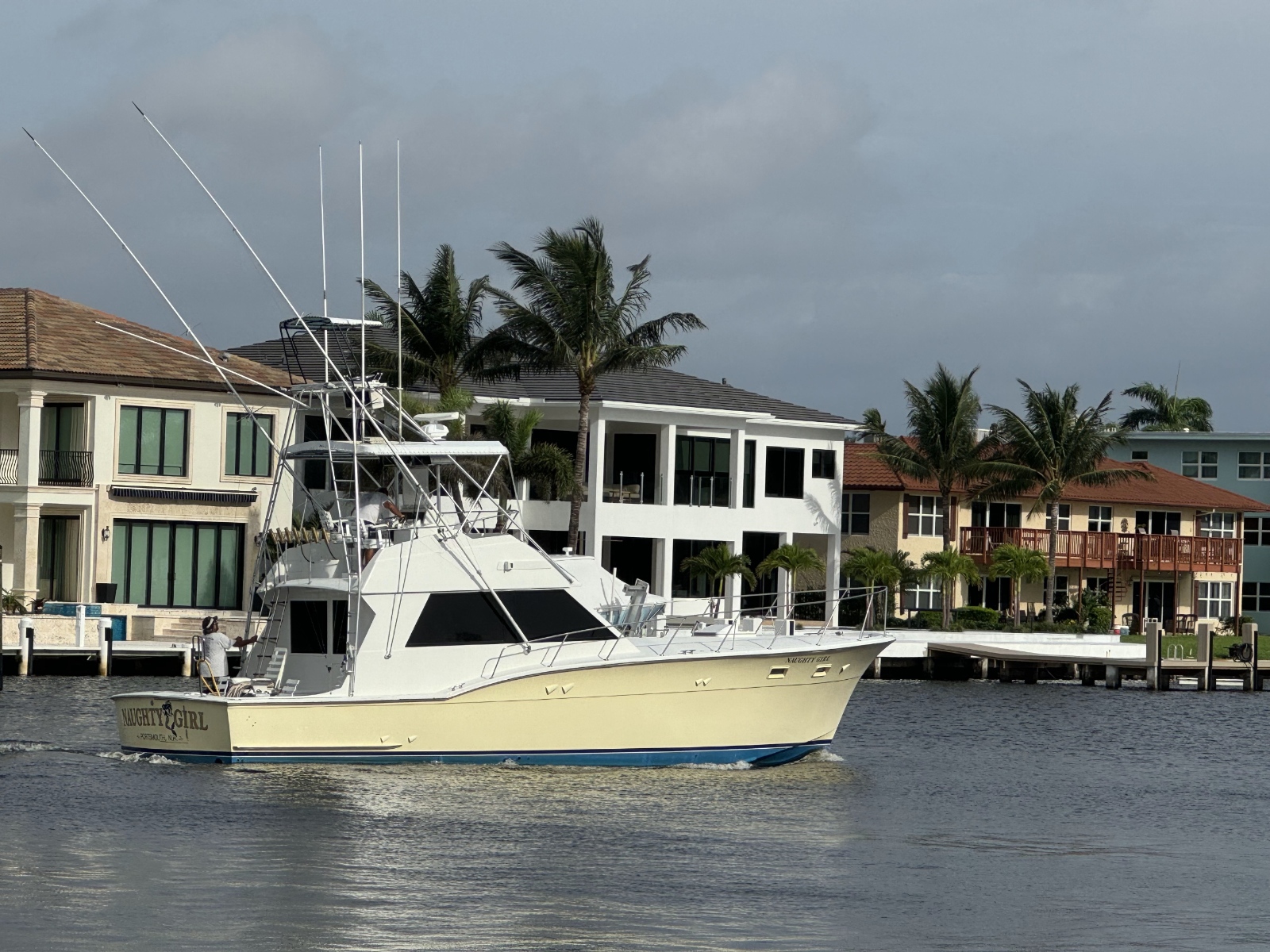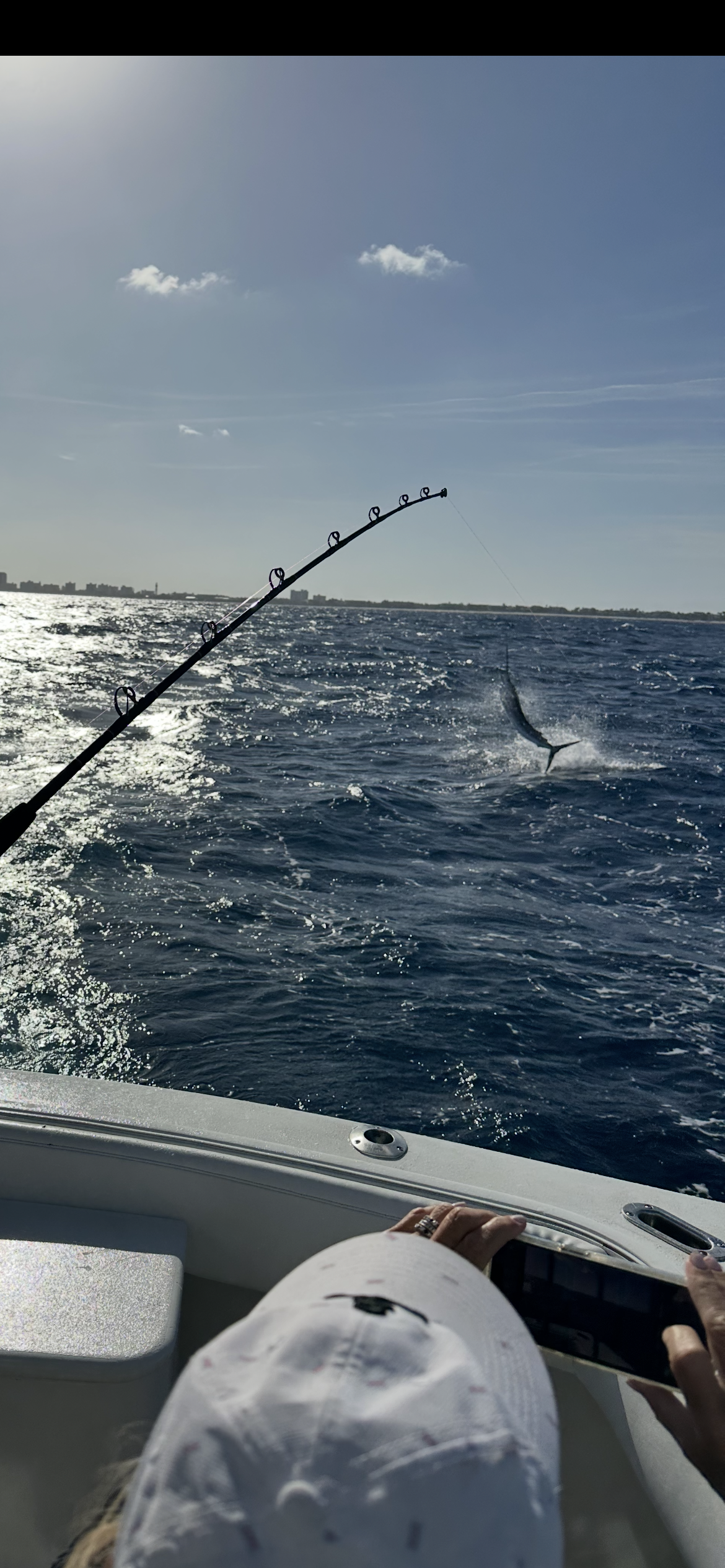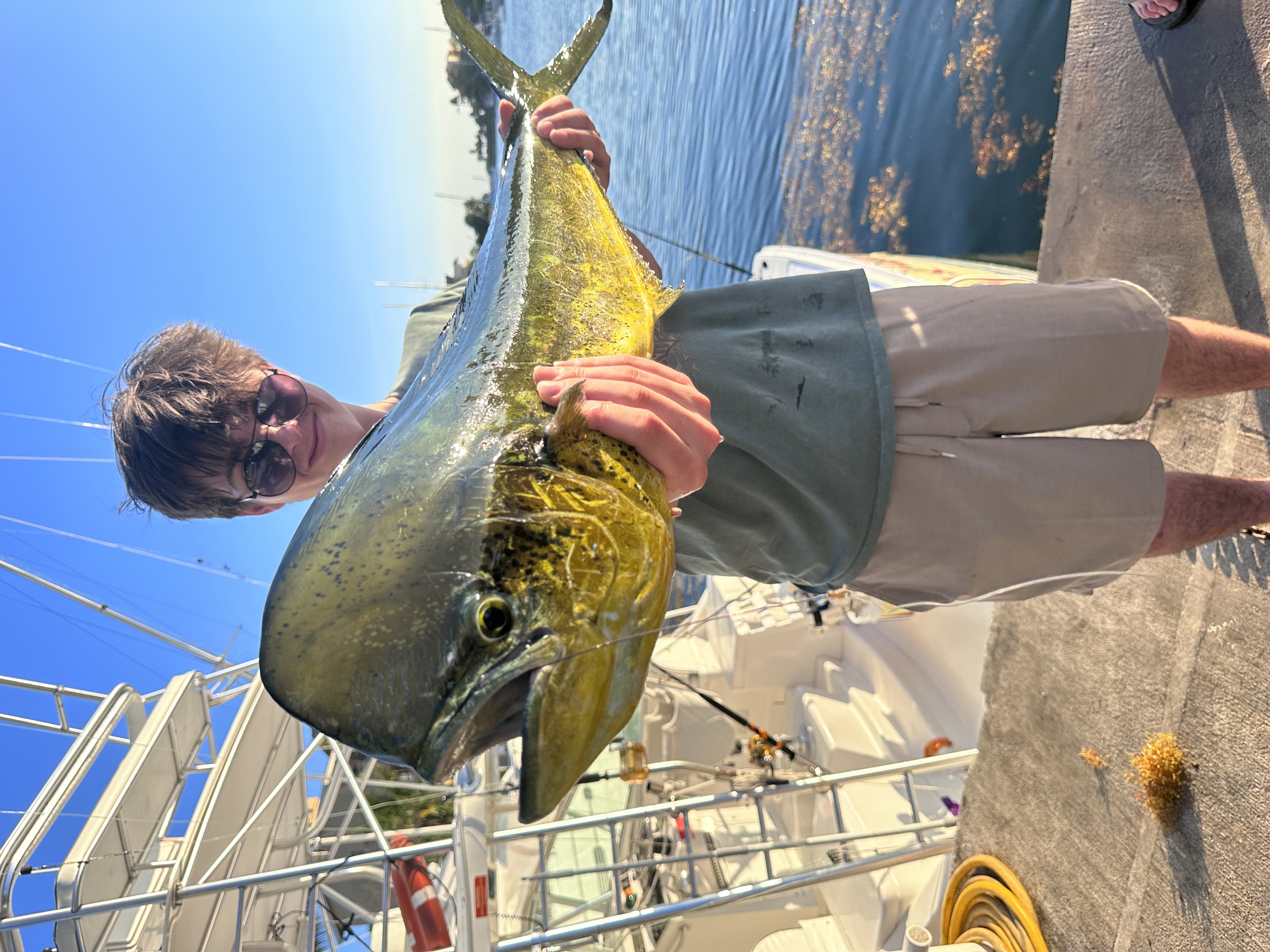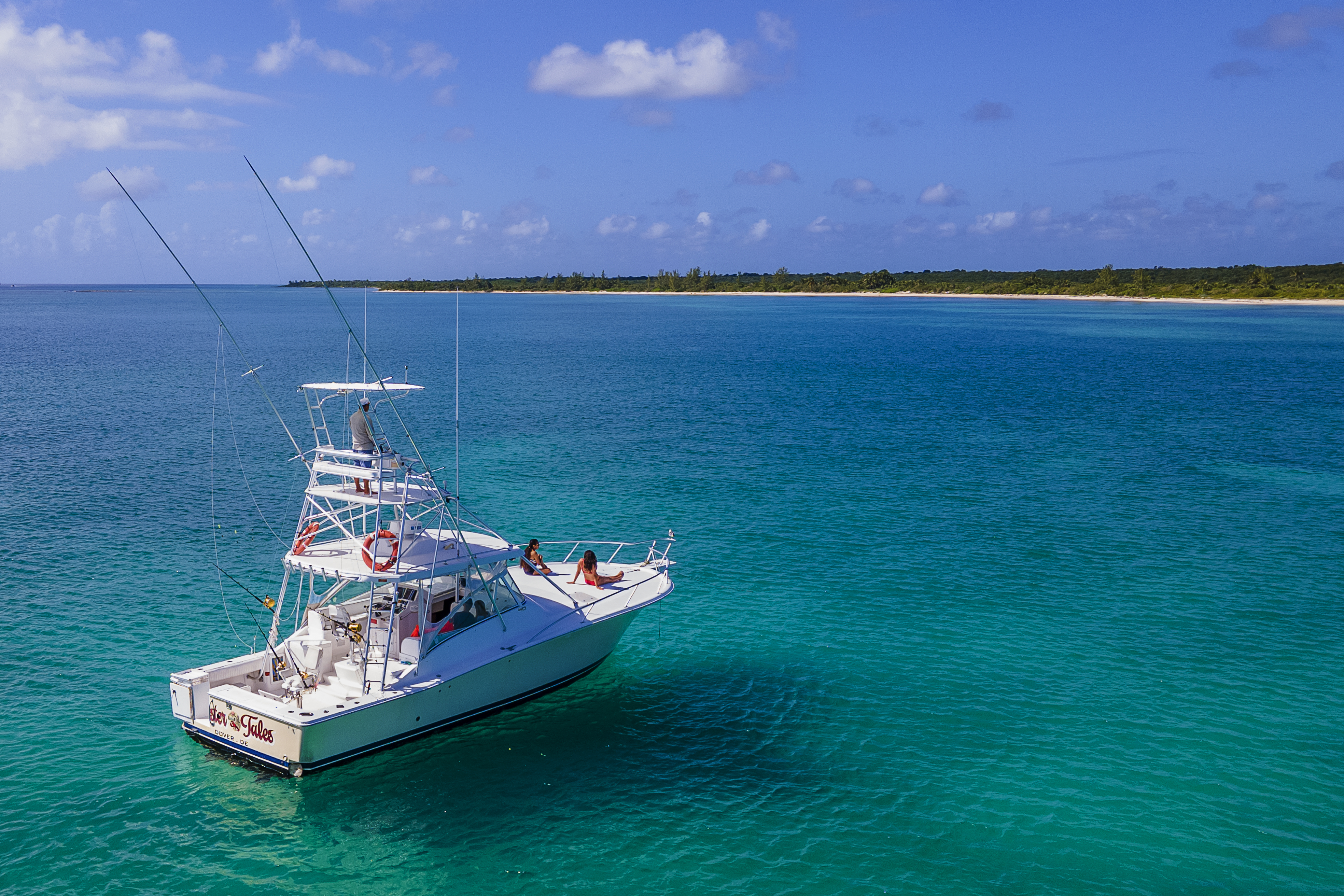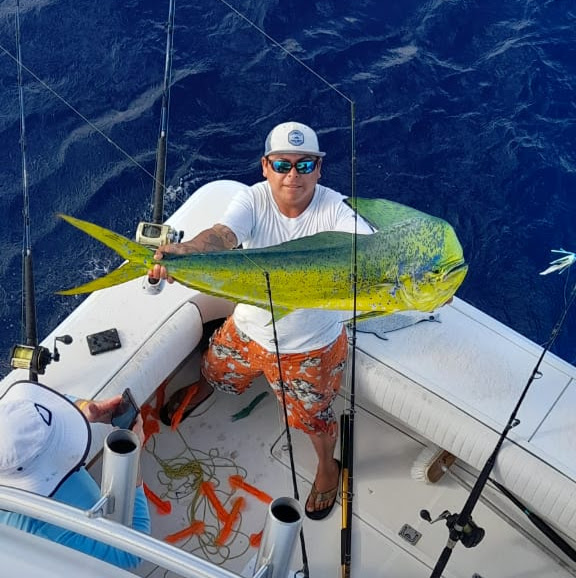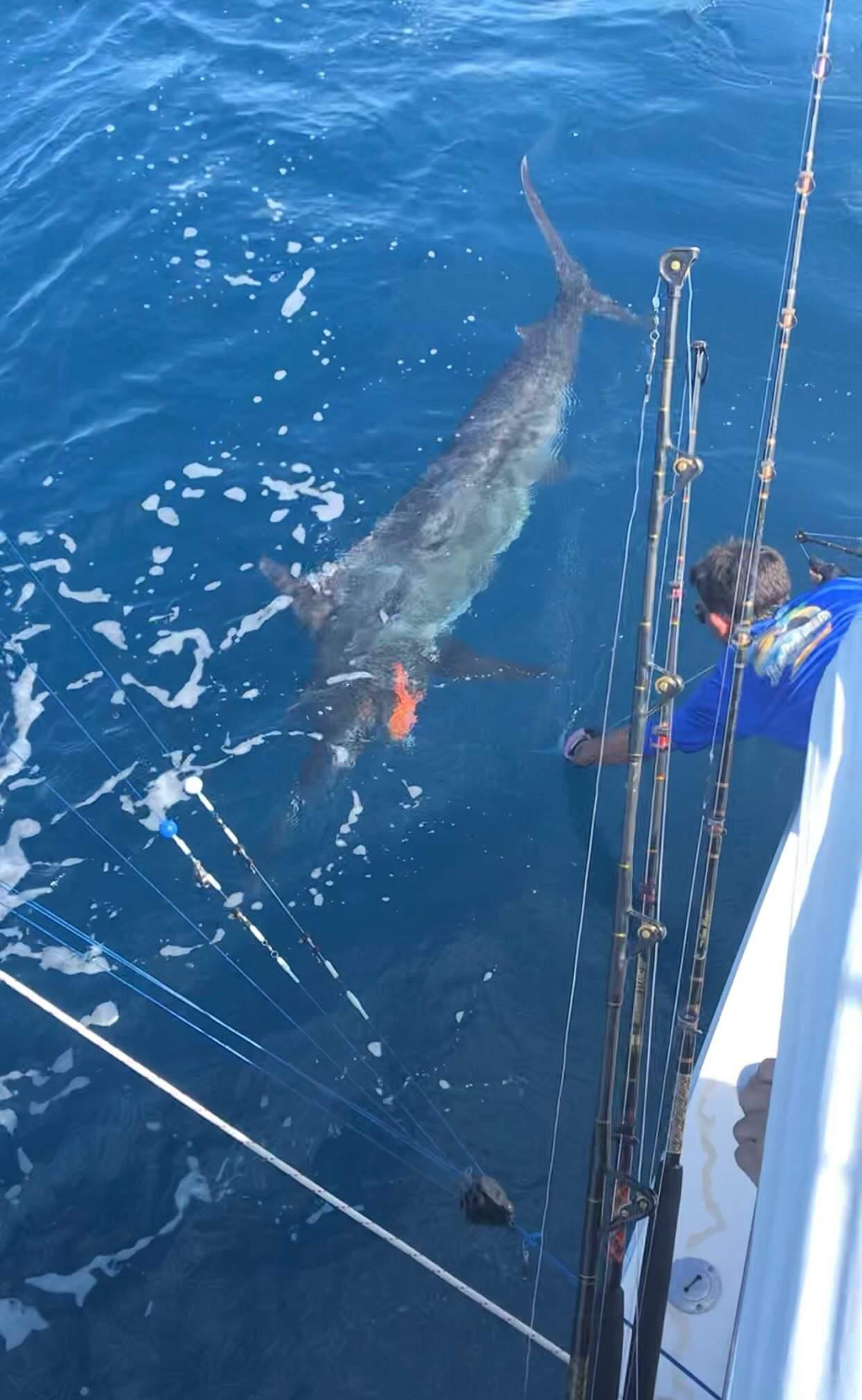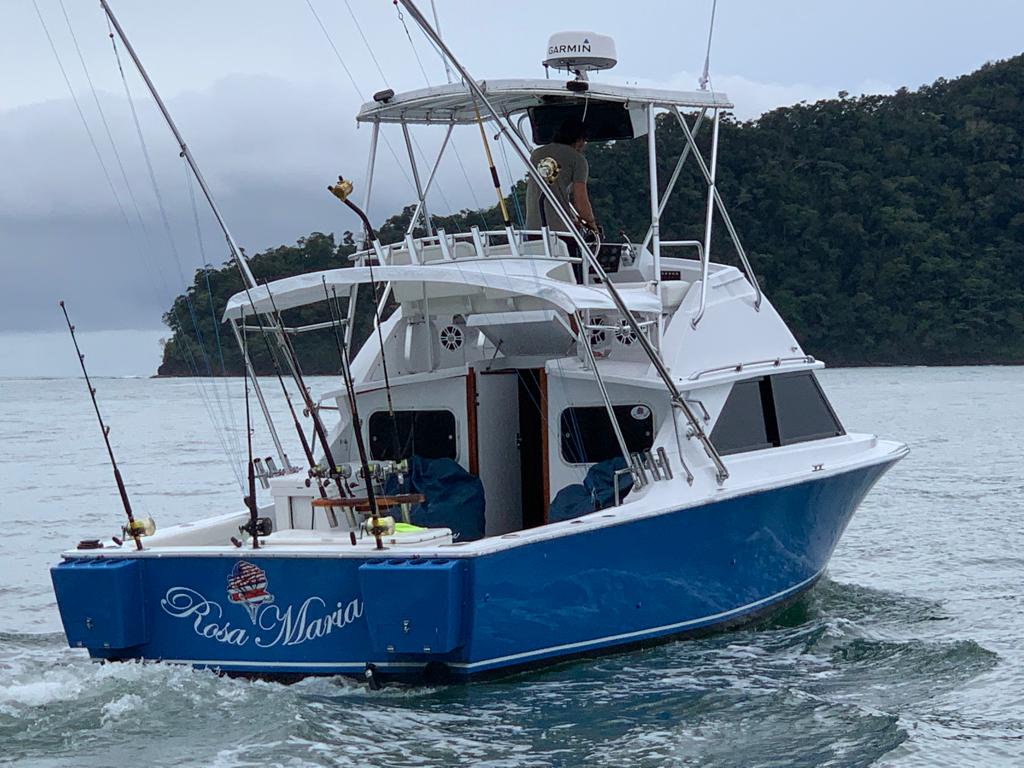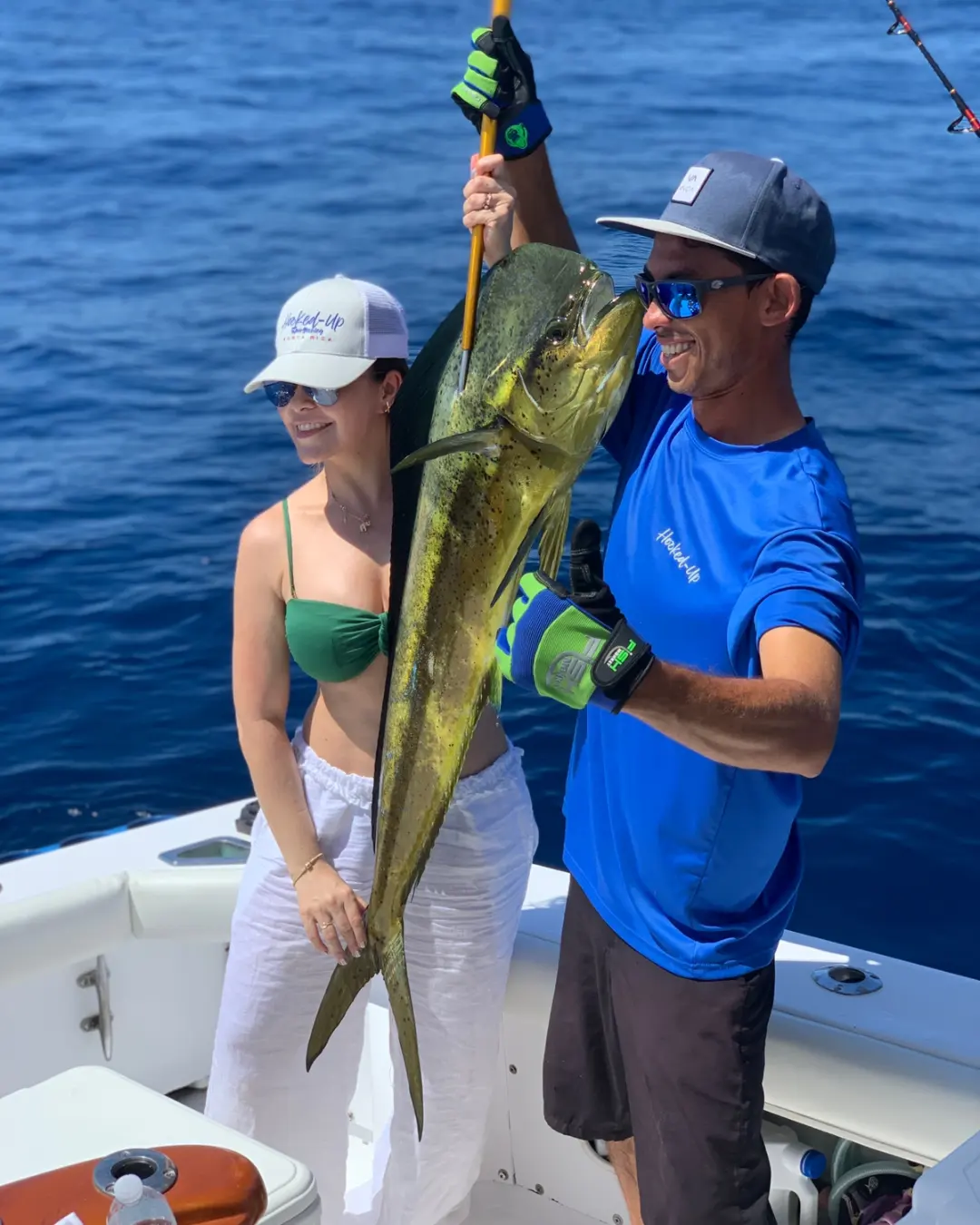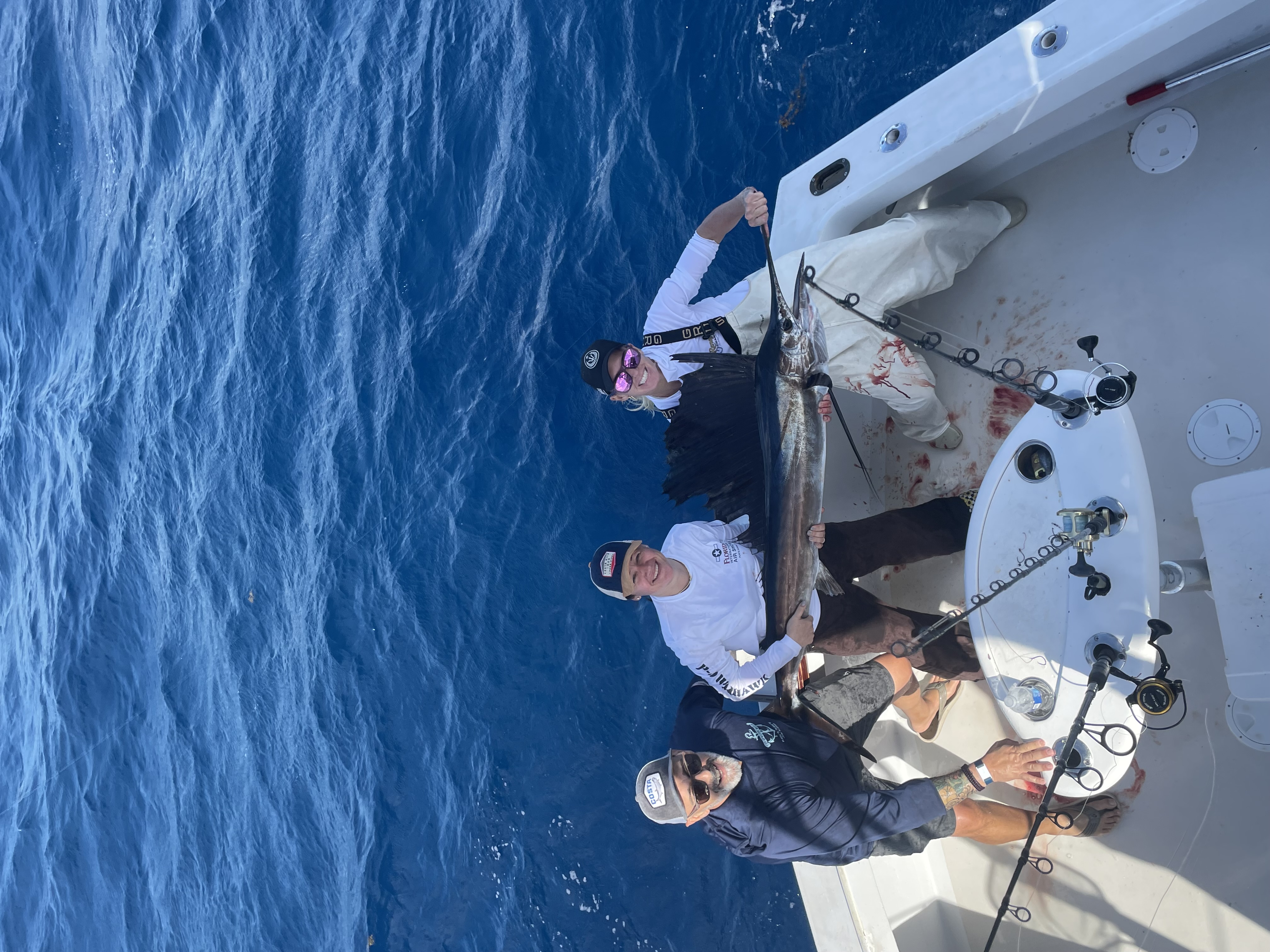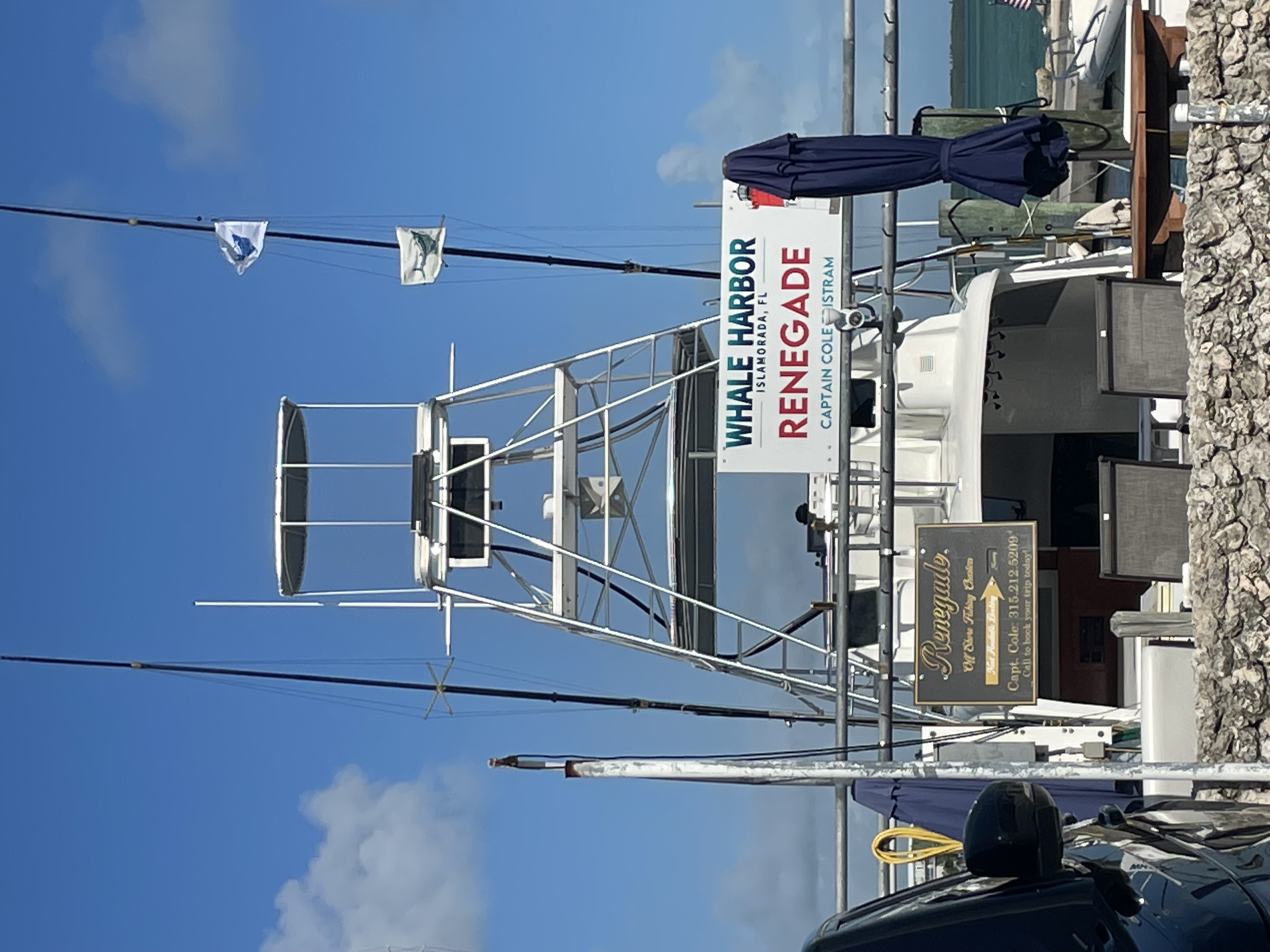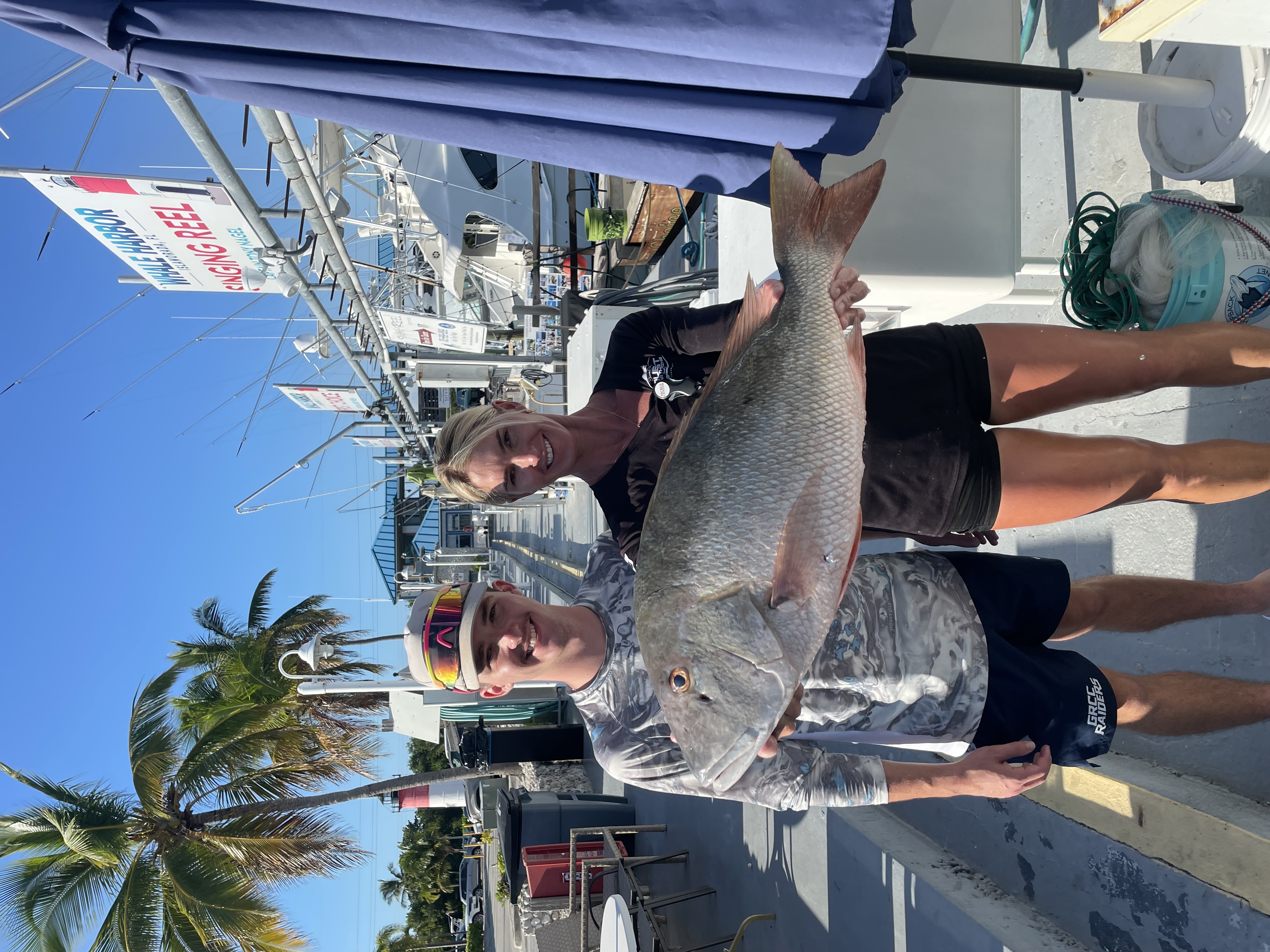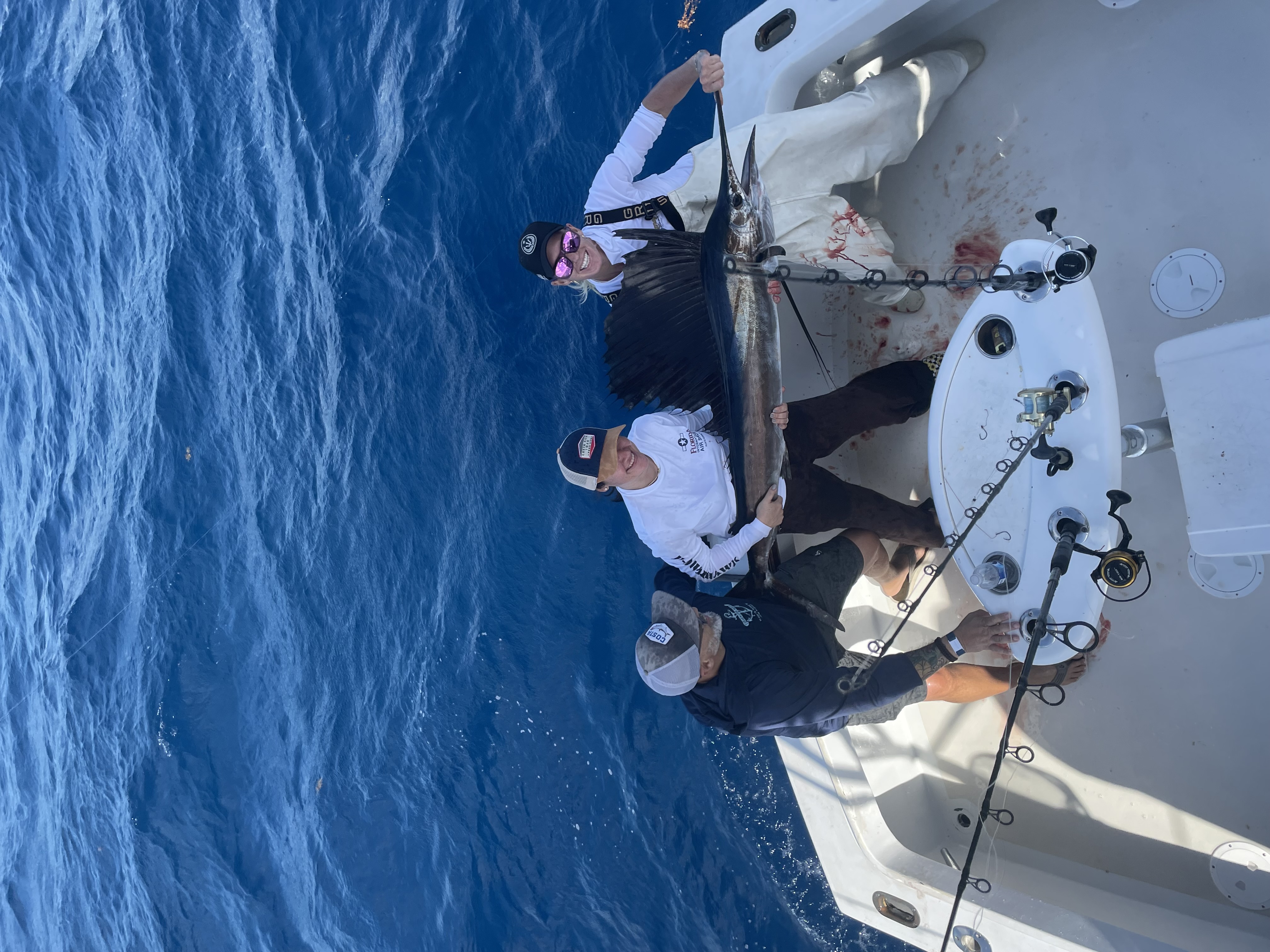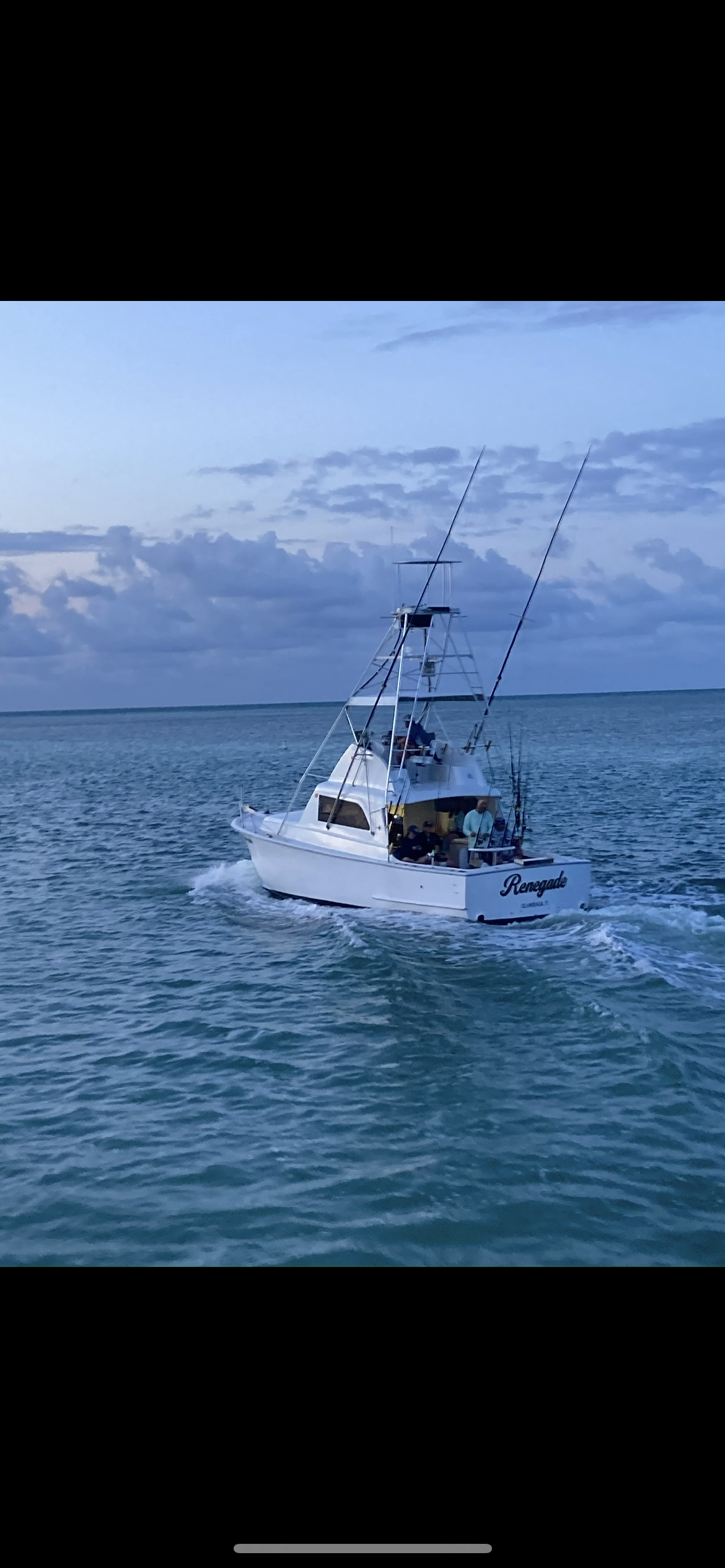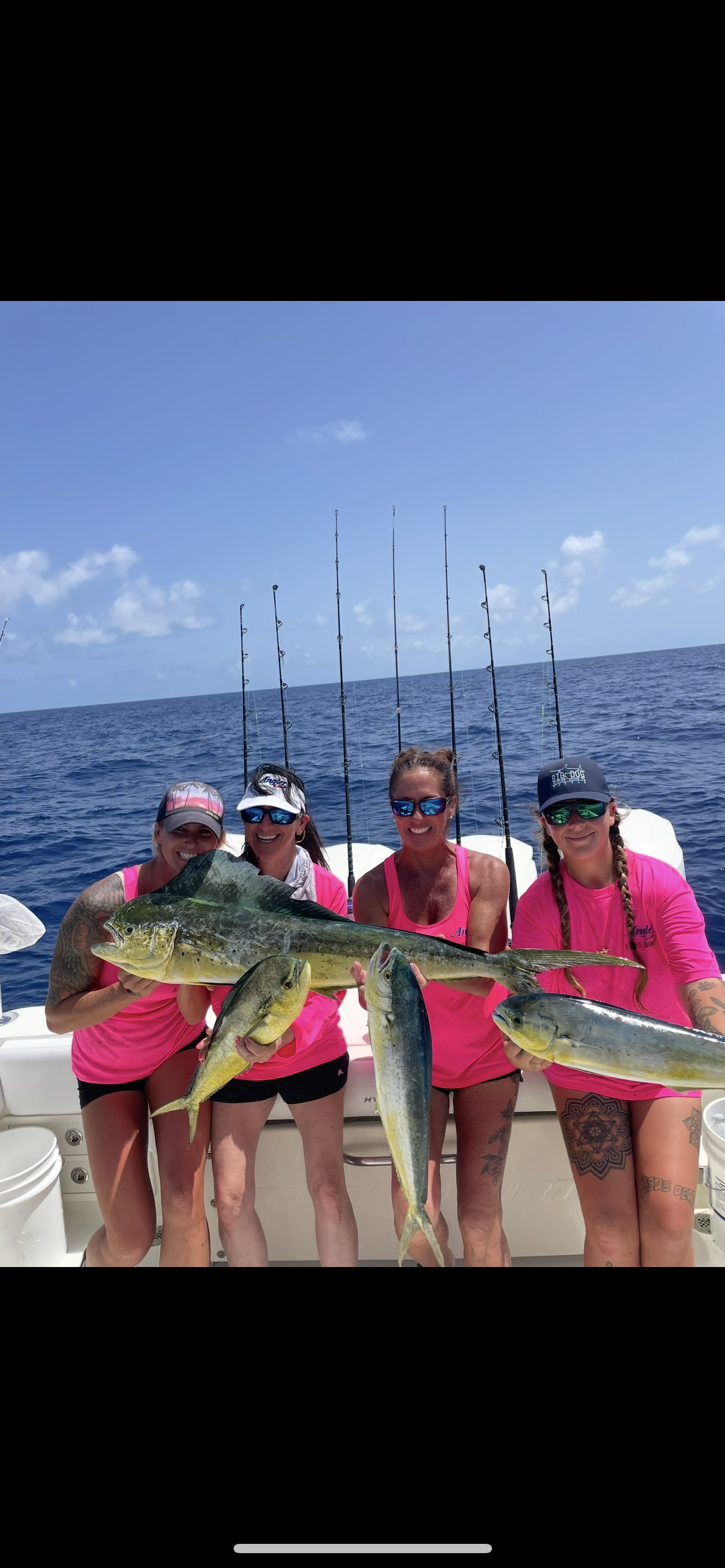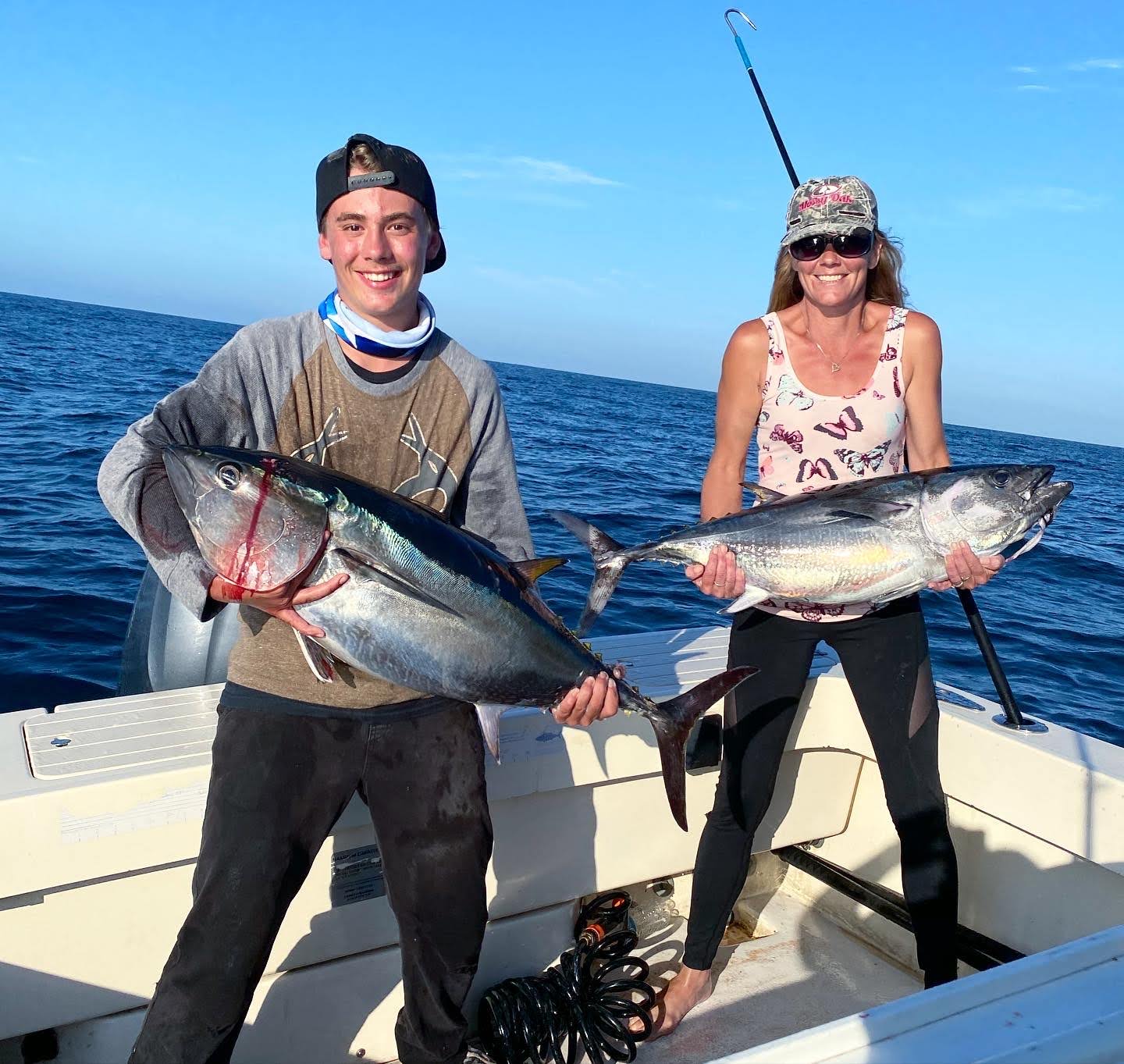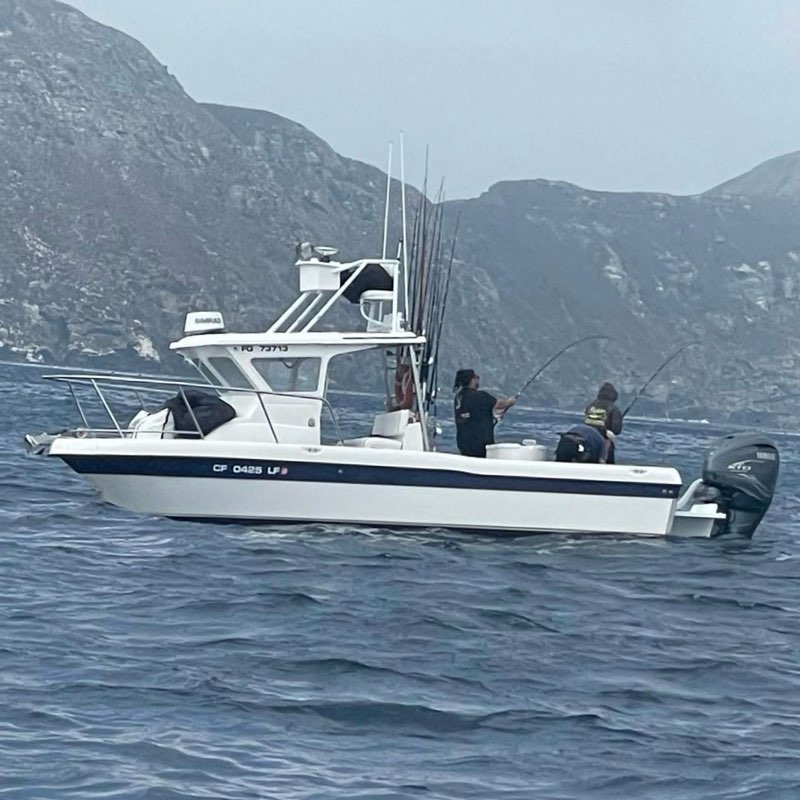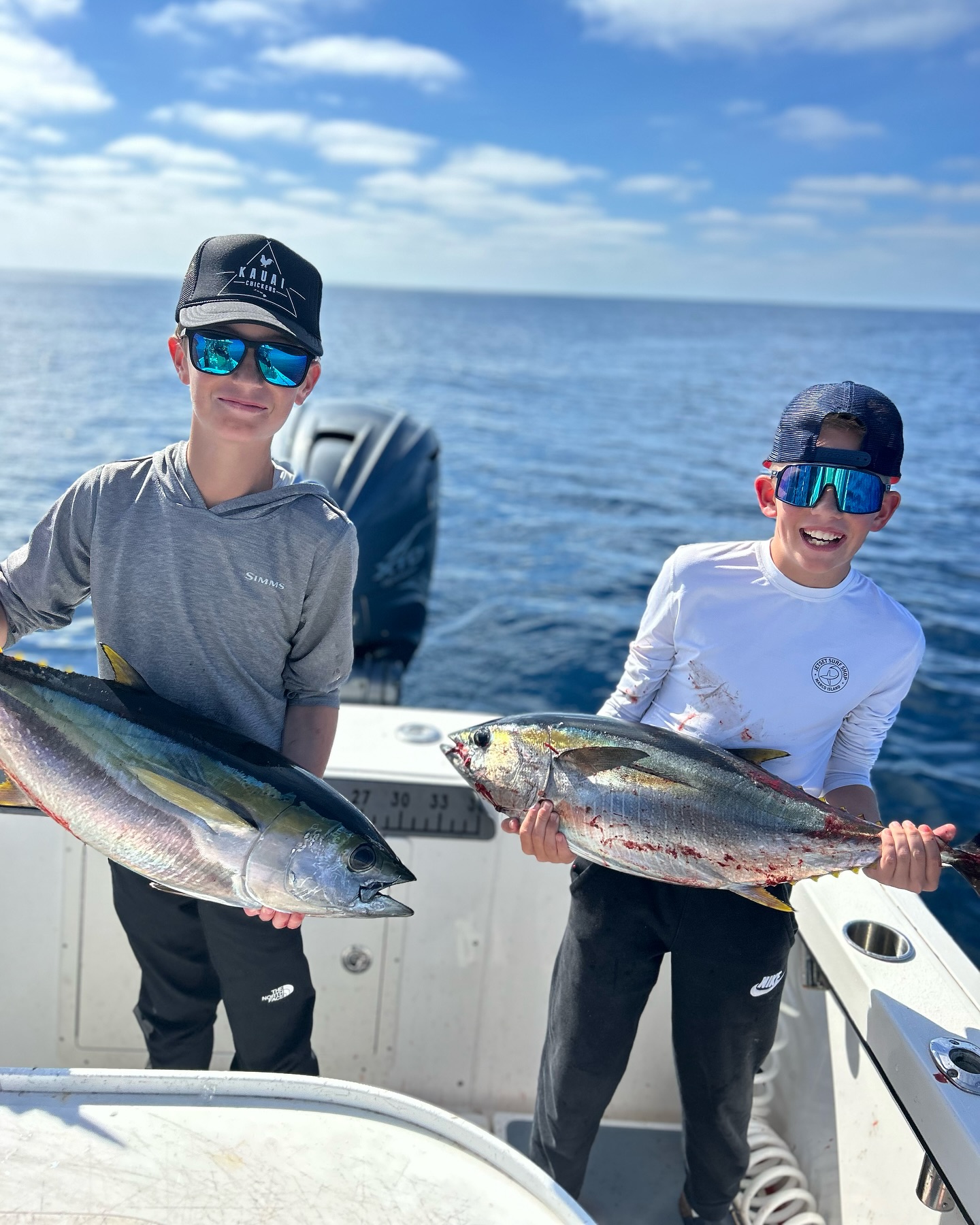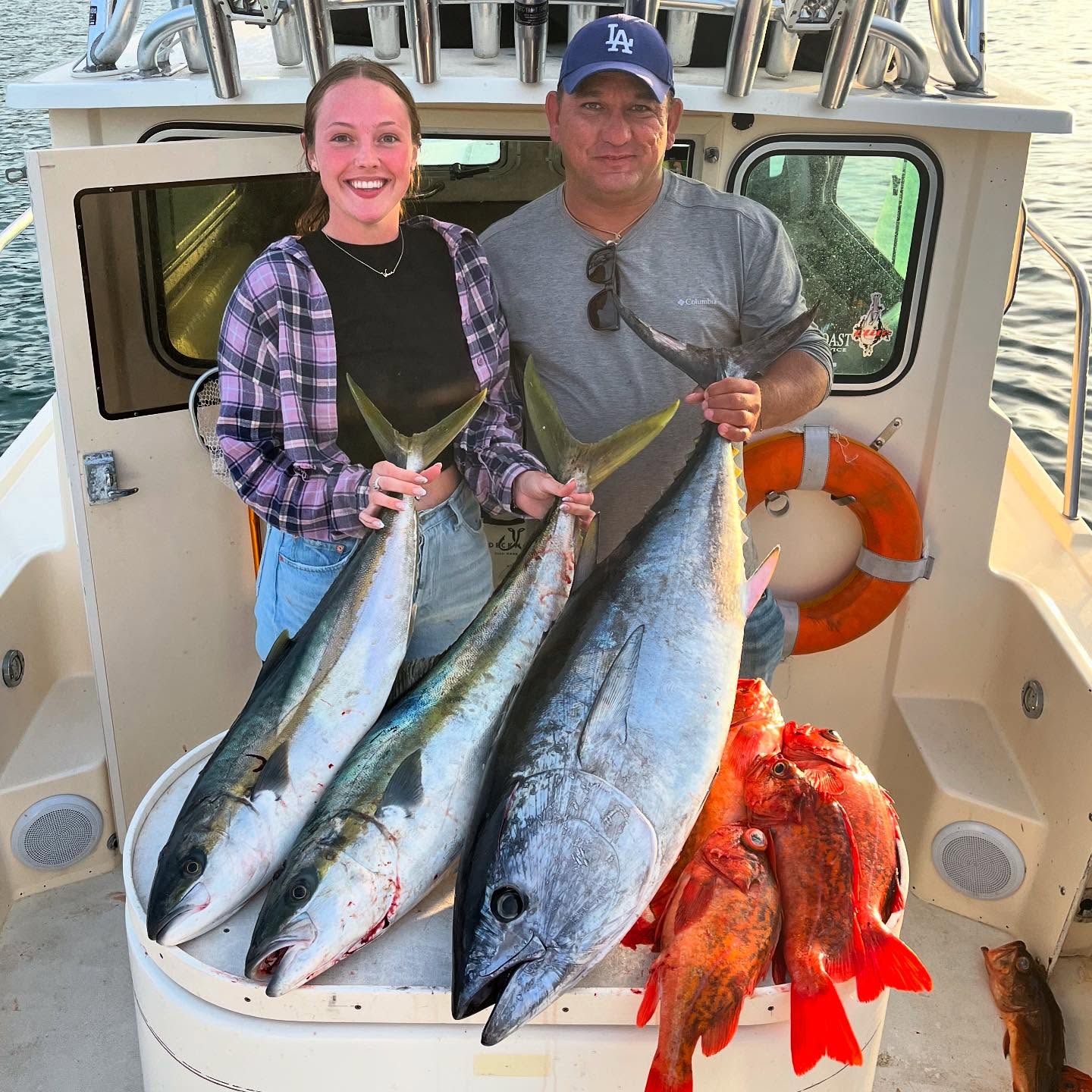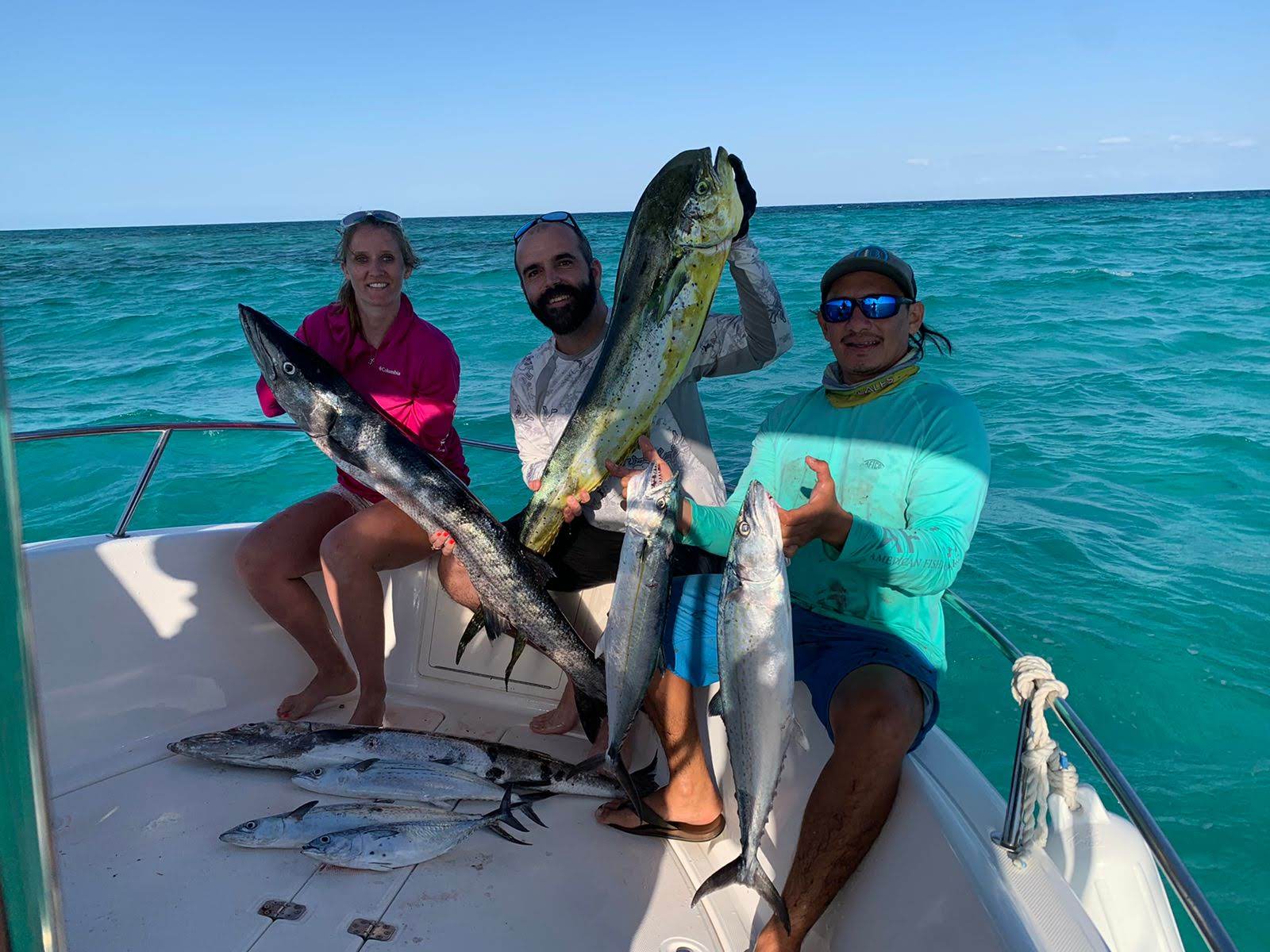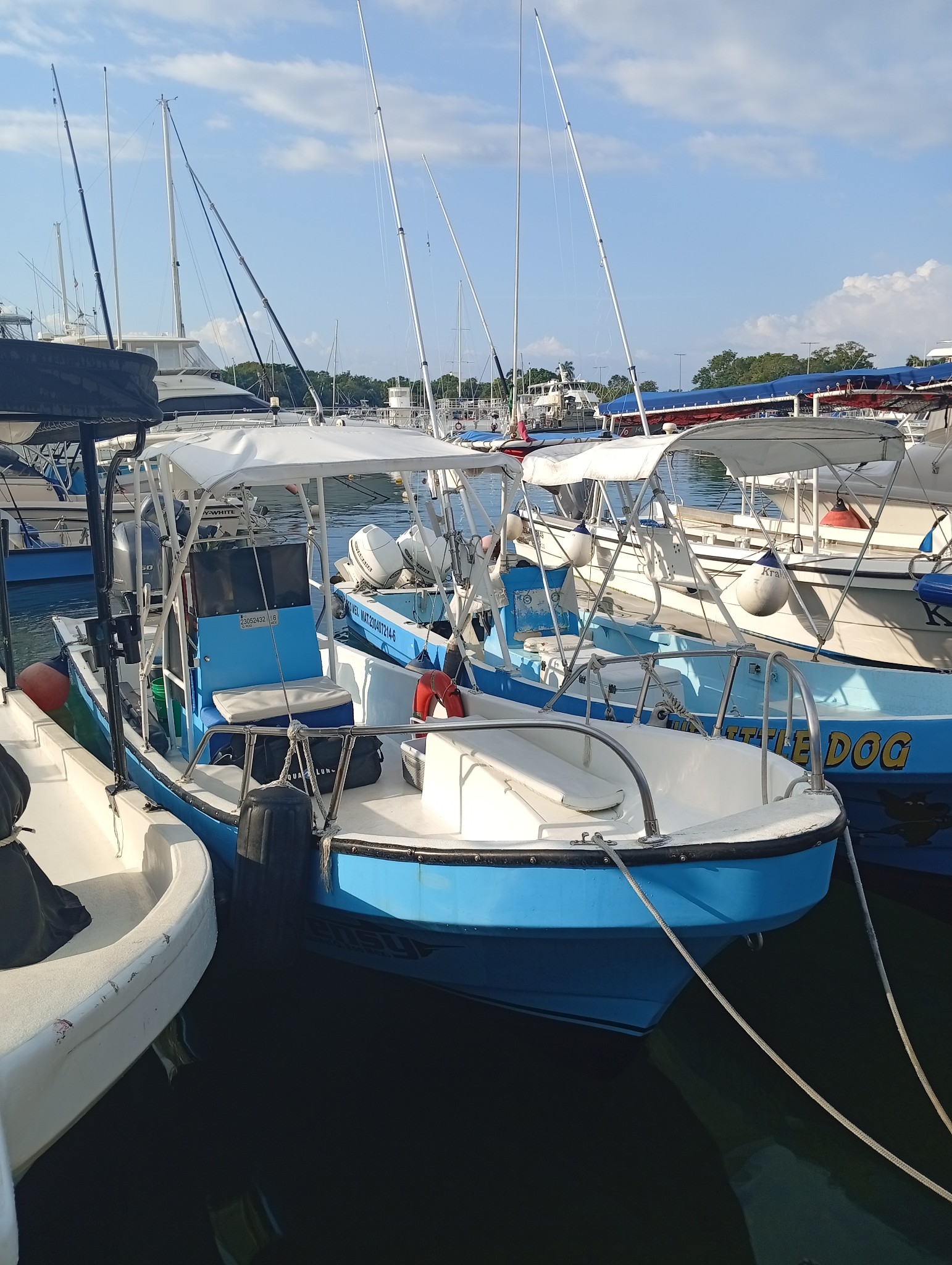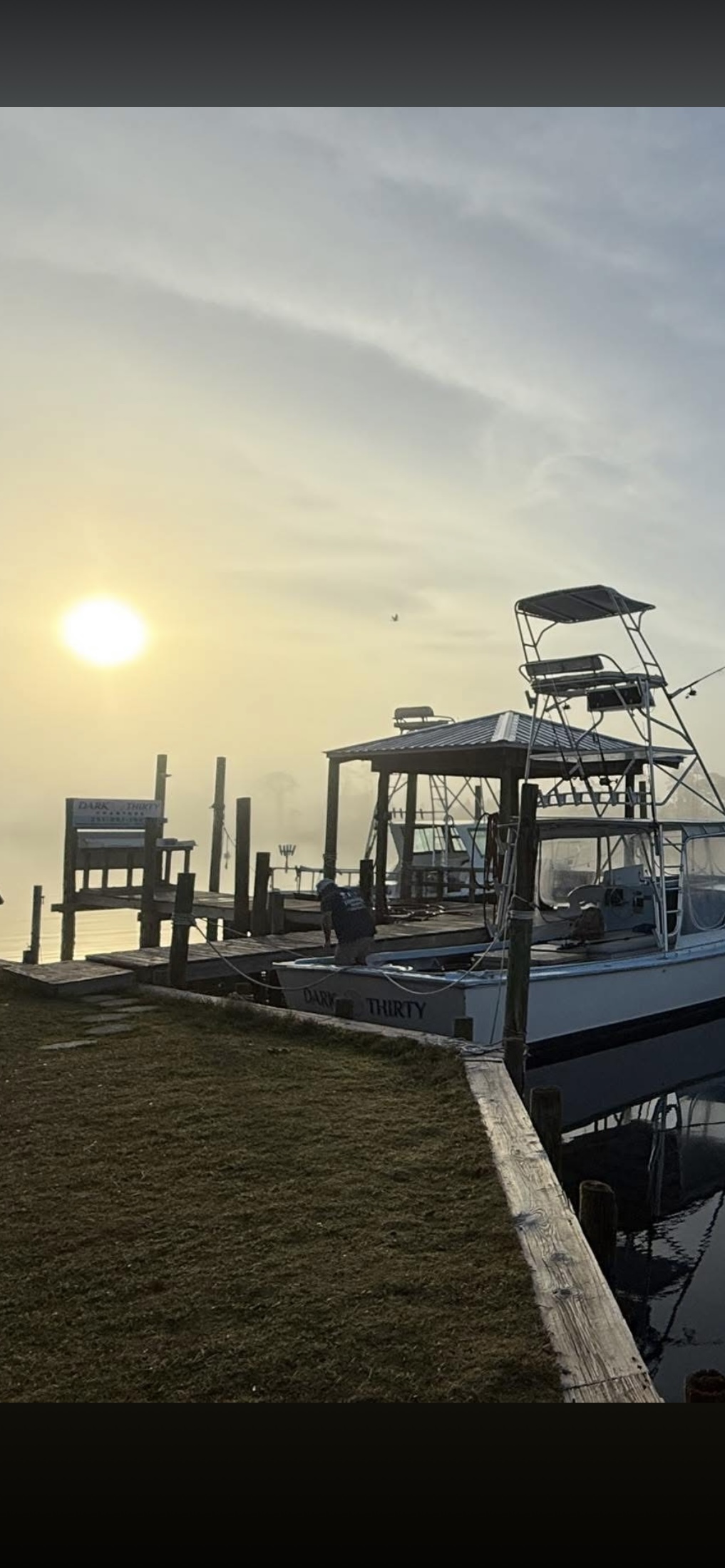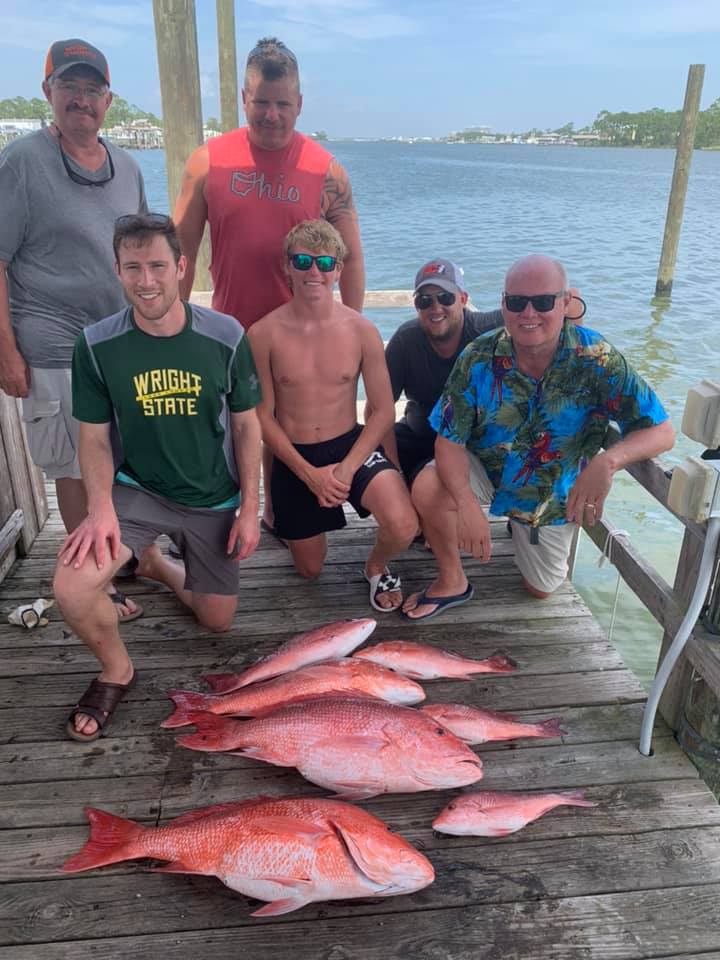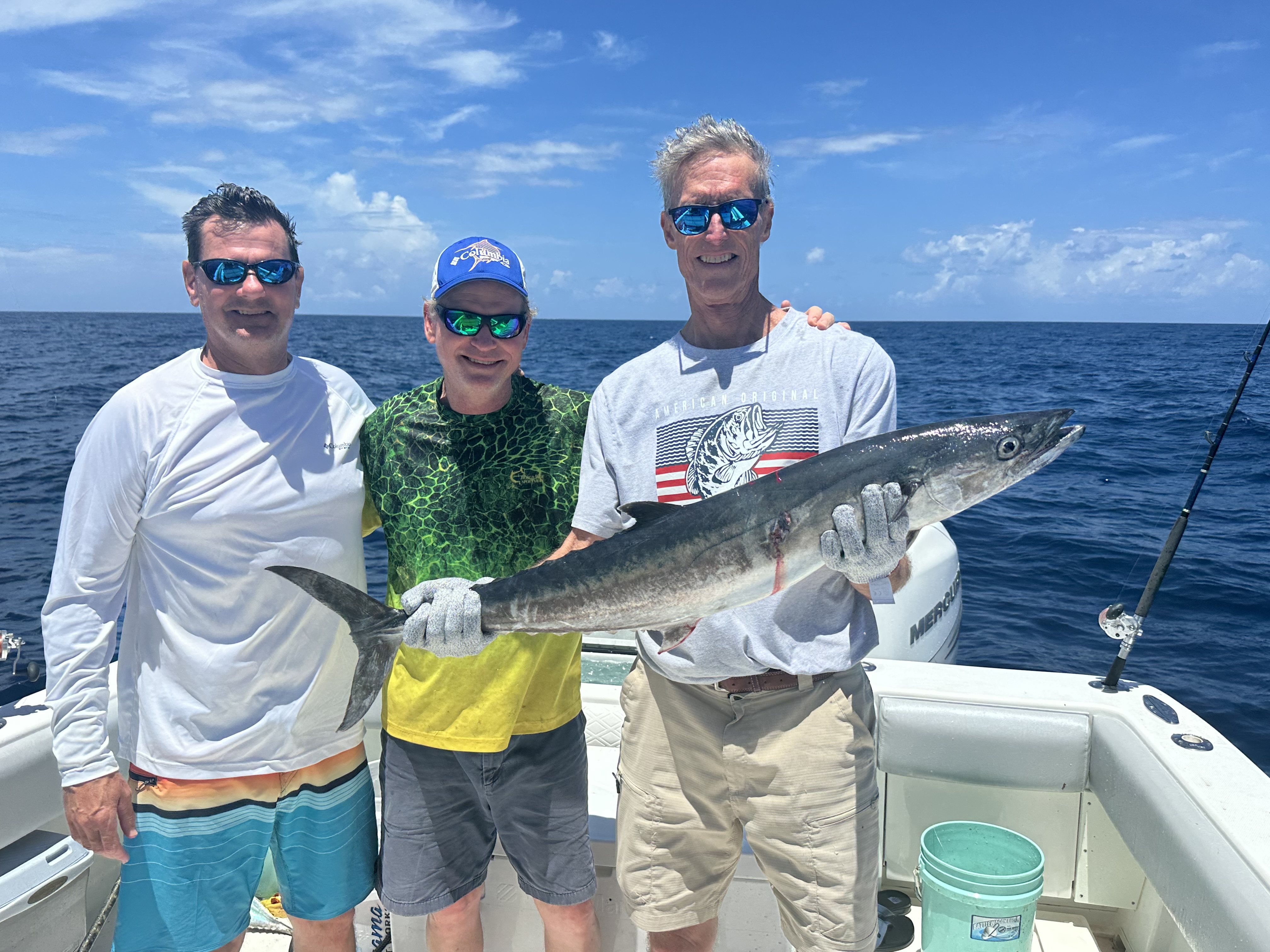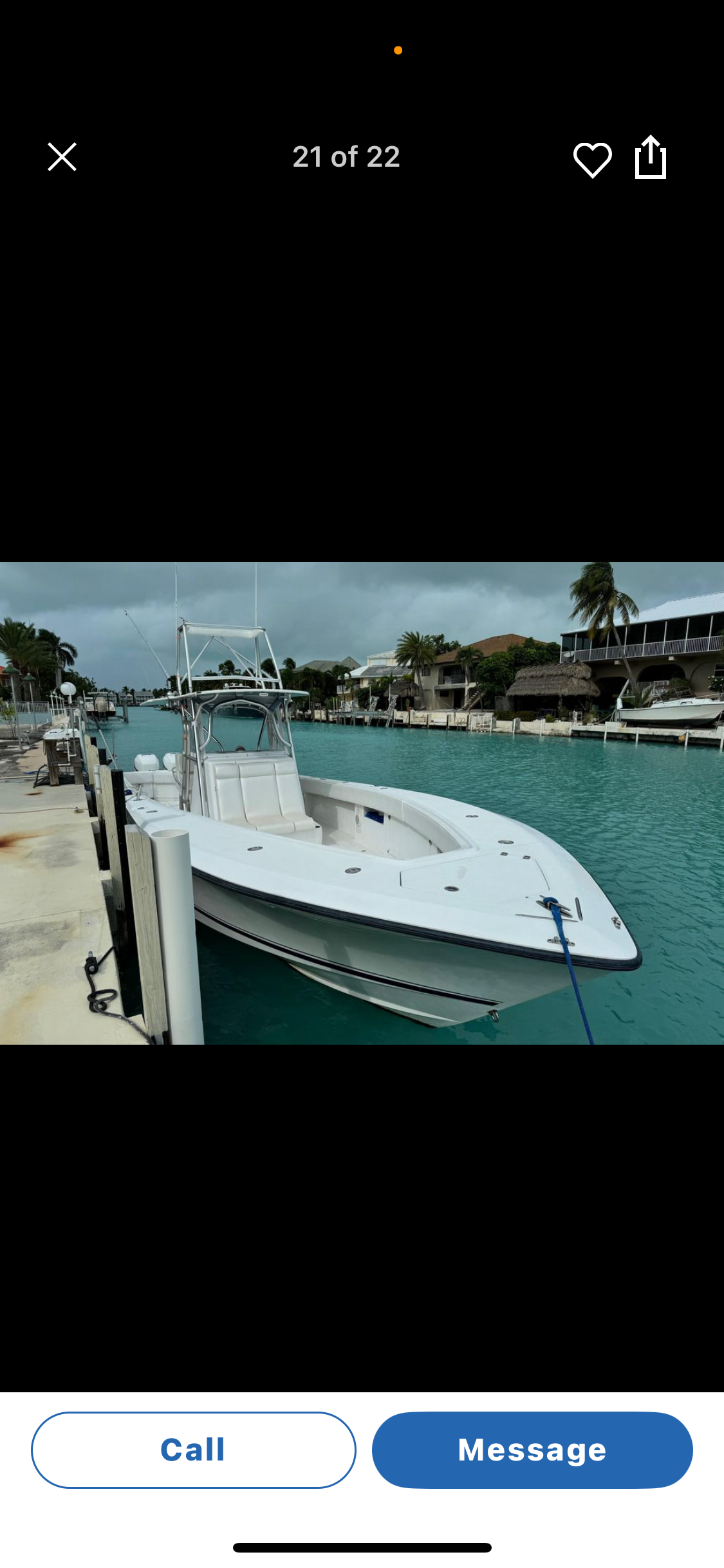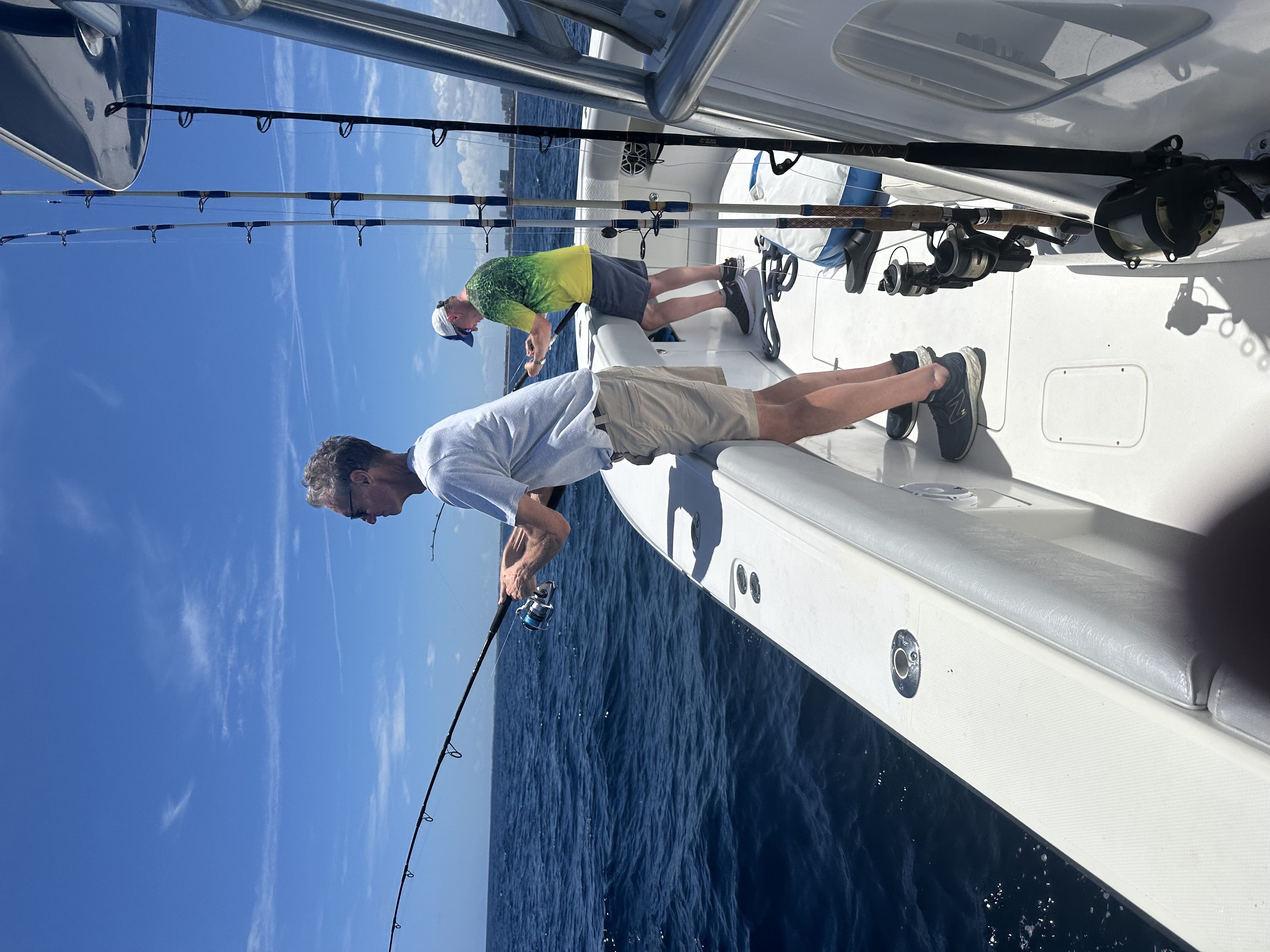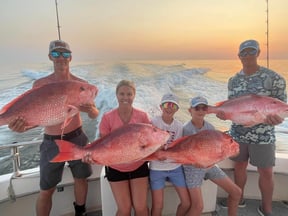Deep Sea, Nearshore Fishing in Pompano Beach
3hr Special
Deep Sea, Nearshore Fishing in Puerto Aventuras
Fishing Charter, Puerto Aventuras
Deep Sea Fishing in Playa Herradura
Full Day Offshore
Deep Sea, Nearshore Fishing in Islamorada
4 Hour Half Day
Deep Sea, Nearshore Fishing in Islamorada
6 Hour 3/4 Day
Epic Offshore San Diego
Offshore San Diego
Deep Sea Fishing in Playa del Carmen
Deep Sea Fishing
Deep Sea, Nearshore Fishing in Orange Beach
December Snapper Reopen Special!
Inshore, Deep Sea, Nearshore in Palm Beach Shores
Catching Fish And Having Fun
We started Captain Experiences to make it easy to book fishing and hunting guides around the world. With over 2,000 Damn Good Guides, our platform makes finding and booking a trip seamless. Head here to check out our trips.
Venturing into the vast, uncharted waters of the deep sea is a thrilling and awe-inspiring experience. Deep sea fishing, an exhilarating pursuit that involves angling in open waters far from the coastline, offers anglers the chance to encounter extraordinary pelagic species and reel in trophy-sized catches.
When it comes to deep sea fishing, having the proper gear is paramount to a successful and enjoyable outing. Among the various tools essential for this adventurous pursuit, the fishing rod stands as a critical piece of equipment. The fishing rod is not just a simple stick with a line attached; it is the conduit that connects anglers to the untamed forces lurking beneath the ocean surface. It must be carefully chosen to handle the immense power of deep-sea dwellers and withstand the rigors of saltwater environments. In this guide, we delve into the world of deep sea fishing and unravel the importance of selecting the perfect fishing rod. We will look at some of the best fishing rods for deep-sea fishing, covering the materials they are crafted from, their ability to handle drag pressure, and their overall design.
Our Top 3 Deep Sea Fishing Rods of 2023
Rods were selected based on experts' opinion, quality of materials, and price-performance ratio. Each rod had to have positive feedback from industry experts, high quality materials to ensure a sturdy and effective rod, and solid cost-effectiveness.
Daiwa Proteus
Constructed of graphite weighing in at 1 pound, this conventional fishing rod is one of the best deep sea fishing rods out there. Sporting Fuji K guides with aluminum oxide rings and a Fuji back-stop locking reel seat. Some models feature Winn grips which offer a comfortable feel while still being touch and grippy. There are a variety of models available ranging from 7’ to 8' 10 " in a multitude of actions and line weights so whatever you’re targeting, they have a model fit for you at an affordable price. This is a very well balanced fishing rod.
Looking for more conventional rods? Check out our other blog post covering what you need to know about conventional fishing rods.
PENN Carnage III Jigging
If you’re looking to go deep-sea jigging to target tuna and wahoo, the Carnage III is the rod for you. PENN was able to make a more than capable rod that features Fuji K guides with alconite inserts, an aluminum gimbal, and a reliable graphite and aluminum Fuji reel seat while still maintaining an affordable price. The Carnage III has reliable grips that are comfortable and won’t get ripped out of your hands when fighting a big fish.
PENN Ally Boat FIshing Rod
Coming in at sizes of 5’6” and 6’6” with medium-heavy to heavy action and the ability to handle up to 100 lb. line, the PENN Ally is a tough rod. This one piece fishing rod features triangular EVA grips to help prevent rod rotation when fighting a tough catch. The Ally has an aluminum and graphite reel seat to prevent pop-offs and Fuji guides and Pac Bay rollers for tangle free use. The quality construction of this fishing pole makes it one of the best fishing rods for deep-sea out there.
How to Choose a Fishing Rod for Deep Sea Fishing
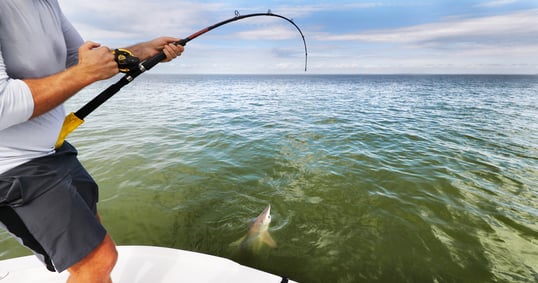
Selecting the perfect fishing rod for your deep sea fishing adventures is a crucial step that can significantly impact your overall experience and success on the water. The right rod will depend on various factors that you should carefully consider before making your decision. Below, we'll explore key considerations to help you choose the ideal fishing rod tailored to your unique needs and preferences.
Material
When it comes to deep sea fishing rods, the choice of materials plays a pivotal role in their performance and durability. Common materials used include graphite, fiberglass, and composite blends. Each material has its own set of advantages and drawbacks. Graphite rods are renowned for their lightweight, sensitivity, and strength, making them suitable for targeting smaller to medium-sized species. On the other hand, fiberglass rods offer exceptional durability and power, making them ideal for handling large and aggressive deep sea dwellers. Composite rods blend the best of both worlds, providing a balance of strength, sensitivity, and versatility. Depending on your targeted species and preferred fishing techniques, choosing the right material will ensure a reliable and enjoyable fishing experience.
Power
Rod power refers to its resistance to bending or its "backbone." Power ratings range from light to heavy, and each rating is designed to handle different line weights and lures. Light power rods are more flexible and sensitive, suited for finesse fishing and targeting smaller species. Heavy power rods, on the other hand, offer robustness and strength, making them ideal for battling powerful deep sea predators. Consider the species you intend to target and the kind of fishing experience you desire to determine the appropriate power rating for your fishing rod.
Action
Rod action describes where and how much a rod bends when pressure is applied to it. Different actions, such as slow, moderate, fast, and extra-fast, impact casting distance, accuracy, and the ability to control a fish during the fight. Slow action rods bend throughout their length, providing a gentle fight ideal for light lines and delicate presentations. In contrast, fast action rods bend primarily in the tip section, offering increased casting distance and better hook-setting power. Selecting the appropriate action will depend on your fishing style, target species, and the specific conditions you expect to encounter in the deep sea.
Length
Rod length plays a crucial role in casting distance, control, and lifting power. Longer rods generally cast farther, while shorter rods offer greater maneuverability in tight spaces. For deep sea fishing, common lengths range from around 6 to 8 feet. Longer rods are suitable for long-distance casting and controlling large catches, while shorter rods provide better leverage and control during intense battles. Consider your experience level, the species you aim to catch, and your fishing location when deciding on the ideal length for your deep sea fishing rod.
Reel Seat
The reel seat is the part of the rod where the fishing reel is attached. It plays a significant role in ensuring a secure and comfortable connection between the rod and reel. Reel seats are typically made from materials like graphite or aluminum, offering durability and corrosion resistance, crucial in the salty sea environment. When choosing a rod, inspect the quality of the reel seat and ensure it complements your chosen reel, providing a solid foundation for your deep sea fishing setup.
Guides
Guides are the small loops along the rod that distribute the line weight and guide the line during casting. High-quality guides are essential for reducing friction and preventing line wear, especially when dealing with heavy lines and big catches. Common guide materials include ceramic, aluminum oxide, and titanium. Look for rods with a sufficient number of guides, evenly spaced, and secured firmly to the rod's blank for optimal line control and smooth casting.
Handle
A comfortable and durable handle is vital for maintaining a firm grip during long fishing sessions. Handles are commonly made from materials like cork, EVA foam, or rubber, each offering unique advantages. Cork handles are known for their comfort and sensitivity, EVA foam provides a non-slip grip, while rubber handles offer excellent durability and weather resistance. Choose a handle material that suits your preferences and ensures comfort during extended deep sea fishing excursions.
Line Weight
Line weight refers to the strength and thickness of the fishing line recommended for a particular rod. It is essential to match the line weight to the targeted species and the rod's power. Using an appropriate line weight ensures optimal performance, efficient casting, and better control during the fight with your catch. Refer to the rod's specifications to determine the suitable line weight for your deep sea fishing endeavors.
Portability
For anglers who travel or have limited storage space, portability is a crucial factor when choosing a deep sea fishing rod. Multi-piece rods or telescopic rods are designed for ease of transport and convenient storage. While portable rods are convenient, ensure that they still meet other essential requirements, such as strength and performance, to ensure an enjoyable fishing experience in the deep sea.
Budget
Budget is a significant consideration for many anglers when selecting a fishing rod. While it can be tempting to opt for the cheapest option, investing in a quality rod will often prove more cost-effective in the long run. High-quality rods may come at a higher initial cost, but their durability and performance can prevent frequent replacements or repairs. Strike a balance between quality and affordability, and consider your long-term fishing goals when making your decision.
Frequently Asked Questions
What is the best rod for deep sea fishing?
The best rod for deep sea fishing ultimately depends on who is using it, what they are targeting, the method in which they plan to catch fish, and how much they are willing to spend. To find the best rod for you, I would use the guide above to help you decide the best fishing rod for you.
Curious about the best rods for kids? Have a look at our post going over the best kids fishing poles for everything you need to know about kids fishing poles.
What is the best material for a deep-sea fishing rod?
This can vary depending on individual preferences, fishing techniques, target species, and budget. You want something well balanced, something sturdy and reliable but also lightweight. Some of the common rod materials are graphite, fiberglass, and composite blends. Each material has its own set of advantages and drawbacks. I recommend using the guide above to help decide what material is best for you.
How long should a deep-sea fishing rod be?
Commonly for deep sea fishing rods, 6-8 feet is the recommended length. Longer fishing poles offer further distance when casting while shorter pulls offer more control and leverage when battling. The physical amount of space one has should also be considered.
What's the difference between a trolling rod and a jigging rod?
Trolling rods and jigging rods are two distinct types of fishing rods designed for different fishing techniques and purposes. Trolling rods typically have the reel seats on top of the rod, flex more uniformly to help keep pressure, and range from 6-9 feet in length. Jigging rods typically have the reel seats placed below underneath the rod to help with balance and control, have fast/extra-fast action meaning they bend more in the tip for better sensitivity, and are usually 5-6.5 feet in length.
What's the difference between freshwater and saltwater fishing rods?
Freshwater and saltwater fishing rods are designed to handle the unique challenges presented by their respective environments. Saltwater rods tend to be designed to have better corrosion resistance, handle heavier lines and stronger fish, and faster actions for better control. Saltwater, specifically deep sea, tends to be a more heavy and robust tackle in order to contend with the larger more aggressive species in the ocean.
For an in-depth look at light tackle set ups check out our blog covering the topic with Captain Ryan.
How often should I clean my deep-sea fishing rod?
To keep your rod in good condition and prevent damage from saltwater exposure, it is essential to clean it after each fishing trip. Saltwater is corrosive and can cause rust damage to your rod and its components over time.
Can I repair my broken deep-sea fishing rod?
Minor issues such as loose guides or damaged handle grips can often be fixed with basic DIY repairs. With more significant structural damage such as a broken blank or severe guide damage, it is best to seek professional repair services from an experienced rod builder or tackle shop. Regular maintenance can extend the life of your deep-sea fishing rod, ensuring it continues to perform well in the demanding saltwater environment.
Ready to Test Out Your New Kit?
In conclusion, choosing the right fishing rod is paramount to a successful and enjoyable fishing experience, whether you’re bottom fishing red snapper or jigging for tuna. Remember to consider crucial factors such as material, reel seat, and budget when making your fishing rod selection. Each element contributes to the overall functionality and suitability of the rod for your unique fishing goals. If you’re looking for unparalleled deep sea fishing, Captain Experiences offers 1,300+ damn good guides across the US and beyond to choose from to put that new fishing rod to the ultimate test.
Jake Lane
Updated on November 7, 2024

August 21, 2023

November 7, 2023

January 7, 2022

April 26, 2022

July 31, 2024
Related Articles
July 9, 2024
April 10, 2022
January 3, 2022
Featured Locations
- Fishing Charters Near Me
- Austin Fishing Guides
- Biloxi Fishing Charters
- Bradenton Fishing Charters
- Cabo San Lucas Fishing Charters
- Cancun Fishing Charters
- Cape Coral Fishing Charters
- Charleston Fishing Charters
- Clearwater Fishing Charters
- Corpus Christi Fishing Charters
- Crystal River Fishing Charters
- Dauphin Island Fishing Charters
- Daytona Beach Fishing Charters
- Destin Fishing Charters
- Fort Lauderdale Fishing Charters
- Fort Myers Fishing Charters
- Fort Walton Beach Fishing Charters
- Galveston Fishing Charters
- Gulf Shores Fishing Charters
- Hatteras Fishing Charters
- Hilton Head Fishing Charters
- Islamorada Fishing Charters
- Jacksonville Fishing Charters
- Jupiter Fishing Charters
- Key Largo Fishing Charters
- Key West Fishing Charters
- Kona Fishing Charters
- Lakeside Marblehead Fishing Charters
- Marathon Fishing Charters
- Marco Island Fishing Charters
- Miami Fishing Charters
- Montauk Fishing Charters
- Morehead City Fishing Charters
- Naples Fishing Charters
- New Orleans Fishing Charters
- New Smyrna Beach Fishing Charters
- Ocean City Fishing Charters
- Orange Beach Fishing Charters
- Panama City Beach Fishing Charters
- Pensacola Fishing Charters
- Pompano Beach Fishing Charters
- Port Aransas Fishing Charters
- Port Orange Fishing Charters
- Rockport Fishing Charters
- San Diego Fishing Charters
- San Juan Fishing Charters
- Sarasota Fishing Charters
- South Padre Island Fishing Charters
- St. Augustine Fishing Charters
- St. Petersburg Fishing Charters
- Tampa Fishing Charters
- Tarpon Springs Fishing Charters
- Venice Fishing Charters
- Virginia Beach Fishing Charters
- West Palm Beach Fishing Charters
- Wilmington Fishing Charters
- Wrightsville Beach Fishing Charters
